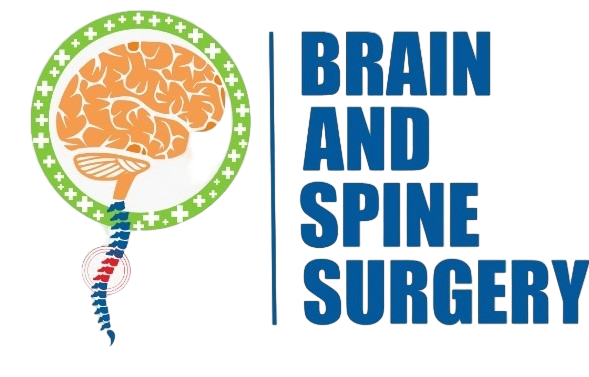Scoliosis is a condition that affects about 3% of people. It causes the spine to curve sideways, which can happen at any age but is usually found during adolescence, especially in females. The severity of the curve can vary, and the symptoms depend on how severe it is.
There are Two Main Types of Scoliosis:
Congenital Scoliosis: Some people are born with scoliosis, a condition where the spine curves abnormally (scoliosis of the spine). This type of scoliosis is often caused by spinal malformations or genetic disorders. Although it is less common, it still affects around 1 in 1,000 births. As the child grows, the curvatures of the spine become more prominent and start causing problems in walking, standing and sometimes pain even.
Degenerative Scoliosis: This type of scoliosis develops later in life, typically in adults over the age of 40. It is often associated with age-related wear and tear on the spine, such as disc degeneration and arthritis.
Other types: Scoliosis can also occur after vertebral fractures due to osteoporosis, tuberculosis of the spine, spinal tumors etc.
Problems with scoliosis:
The abnormal curvature of the spine causes a multitude of problems.
1. Pain: It is due to increasing pressure over the vertebral ligaments and paravertebral muscles.
2. Neuralgia: It is an electric or tingling type of sensation or pain, which occurs due to a nerve root being compressed in the curved vertebrae.
3. Paralysis: Increasing curvature causes nerve root compression and weakness, which can lead to progressive irreversible paralysis of either of the limbs.
4. Urinary problems: Urinary frequency, incontinence and infections occur due to spinal cord compression in scoliosis.
5. Respiratory problems: abnormal curvature of the spine, leads to inequalities in the sizes of the thoracic cavities and reduction of the lung capacity. Hence, these patients have a very poor lung reserve capacity. They feel breathless on slightest of the exertion activity, like fast walking or climbing stairs.
6. Cardiac problems: the reduced size of chest cavity presses over the heart. It leads to swelling of both the feet, water filling in the lungs and poor heart pumping.
7. Degenerative changes: Prolonged scoliosis can exponentially increase the wear and tear of the weight axis. It includes early degeneration of the lumbar vertebra, hip joints and even knee joints.
8. Cosmetic deformity: a hump in the back and bending posture leads to severe cosmetic deformity like unequal shoulders, tilted hips, shortening of legs, limping while walking, and rotation of the chest cavities.
9. Psychological problems: pain, weakness, deformity and cosmetic problems lead to lasting depression and lack of motivation in patients. It hampers their confidence in social and professional life.
There are various types of scoliosis treatment options available:
Conservative Management: For mild scoliosis, doctors usually start with non-surgical treatments. This may include observing the condition, doing physical therapy, and using a brace. Young people who are still growing can benefit from using a brace because it can help to stop the condition from getting worse.
Surgical Intervention: Scoliosis surgery may be recommended if conservative treatments fail to control the spinal curvature or if the condition is severe. The aim of this surgery is to correct the spinal deformity, stabilize the spine, prevent further abnormalities, reduce nerve compression, and improve the appearance of the spine.
The procedure is designed to improve the patient’s quality of life and is a safe way to treat scoliosis.
Scoliosis is a significant condition, but it can be managed effectively with the right treatment.
To get the best results, it’s important to identify and treat it early. Advancements in surgical techniques and the availability of conservative management options mean that people with scoliosis can lead active and fulfilling lives.
A Safe and Effective Approach to deal with it is Scoliosis Surgery:
Scoliosis surgery has come a long way, with remarkable progress made in surgical techniques and technological advancements. Scoliosis surgery stands as a definitive solution, offering a transformative approach to address spinal curvature.
Its primary goals are:
The surgery is aimed at correcting the deformity of the spine, which results in deformity. The goal is to restore a more natural posture.
The stabilization achieved through surgery helps prevent the development of secondary spinal deformities, ensuring long-term spinal health.
In cases where there is nerve decompression, the surgery aims to relieve this pressure, alleviating pain and neurological symptoms.
The surgery can improve the overall appearance of the back, reducing the prominence of the curvature and enhancing self-confidence.
Scoliosis surgery has evolved into a safe and effective procedure, with continuous advancements in techniques and technology. Continuous neuromonitoring during surgery helps safeguard nerves, minimizing the risk of neurological complications.
It is reassuring to know that with these advancements, patients undergoing scoliosis surgery can now have safer and more successful outcomes.
Conclusion:
Individuals with scoliosis can lead fulfilling and active lives with appropriate management and support. Regular monitoring, appropriate exercise, and maintaining a healthy lifestyle can help manage the condition and minimize its impact on daily life.



Leave a Reply